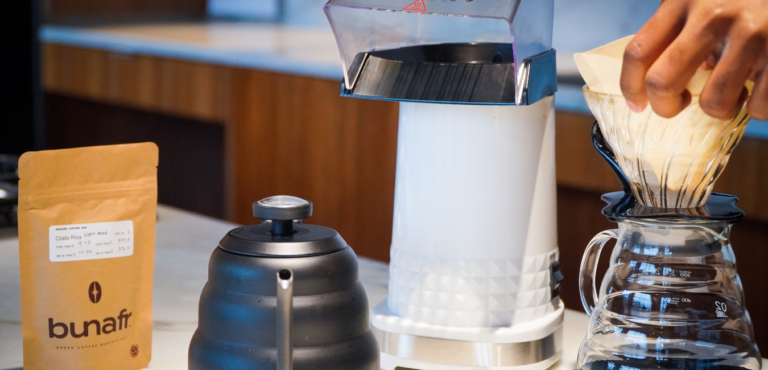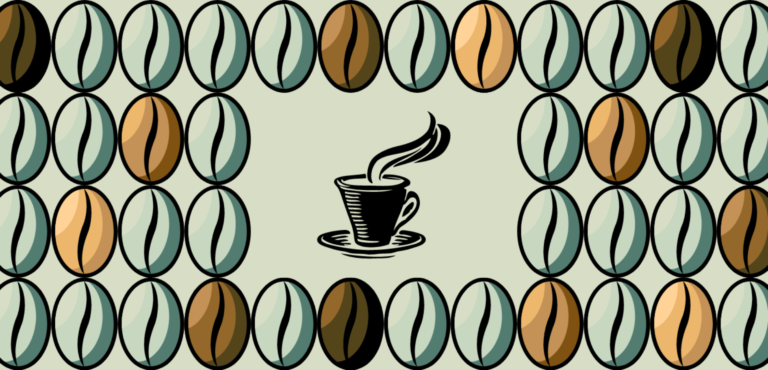Espresso: Everything You Need To Know
Espresso has been the driving force of fast coffee in America for several decades. There was a boom in the popularity of espresso-based drinks like lattes, cappuccinos, and americanos which translated to a rise in demand all over the world. Consequently, espresso has been king for the last 50 years. People love it, and some say that it’s the best way to drink coffee but that’s subjective. Originating in Italy, it was the brainchild of a man named Achille Gaggia, and his breakthrough revolutionized the coffee industry. Although, the first-ever espresso machine is entirely unlike the appliance we know and love today.
While brewing a cup of coffee, grind size plays a pivotal role. General brewing principles indicate that the finer the grind, the stronger the coffee (flavor & caffeine). Doing this results in an incredibly strong cup of coffee. But as the coffee grounds are miniaturized further, a new challenge emerges.
The pull of gravity alone can’t push the hot water through the bed of coffee. Using steam would solve this problem but only if it could be pressurized. Espresso machines in the old days employed a spring connected to a lever, and when compressed, it creates space for the scalding hot water. An increase in pressure created upon letting go of the lever lets the water pass through the coffee, brewing a strong cup instantaneously.
If you’re unsure about which espresso machine best suits your needs, this is our guide.

Today’s espresso machines are a different contraption altogether. Ground coffee is placed in a small metal basket; the portafilter. The basket has tiny holes that allow the liquid to pass through and prevents any pieces of ground coffee from making it into the cup placed beneath. Coffee in the basket is flattened using a method called tamping. Once the portafilter is locked in, the pump is activated to push near-boiling water through the grounds. After about 25-30 seconds, a perfectly brewed espresso shot sits underneath. This time duration is key to getting the perfect cup that matches your taste preferences.
The three elements of espresso are crema, body, and heart. For espresso die-hards, crema is right up there in importance alongside the strength of the cup. It’s the dense layer of foam that forms on top, and it gets its name from the Italian word for cream. It’s a phenomenon that occurs as the dissolved CO2 escapes when the brewed coffee is exposed to atmospheric pressure.
The quality of the foam gives us a glimpse into the espresso’s body and heart; The amount of foam helps us gauge the freshness (less foam = less fresh), and the color of the foam tells us how strong it is (darker foam = stronger coffee). An espresso made with freshly roasted coffee will have a good amount of crema, but there is no standard on how much there should be.

Finding your perfect shot of espresso is an adventure, and these are the variables that change the course of your journey:
- Type of green beans
- Grind size and uniformity
- Water temperature
- Coffee to water ratio
- Brew Duration aka Flow Rate
- Brewing pressure
- Tamping pressure
Great espresso has always been about the recipe. But there isn’t a one-size-fits-all measurement out there to make the perfect espresso, because what you love in your coffee varies from what someone else does. Here’s a standard recipe for a double shot espresso.
Espresso: What You Need?


Espresso Machine
Freshly Ground Coffee
1
Fill the reservoir in the espresso machine with water and switch on the machine to heat the water.
2
Weigh out the desired amount of beans and grind your coffee just moments before you start brewing. A typical double shot of espresso needs 18-22 grams.
3
Clean the portafilter basket with a dry cloth to remove any moisture and any leftover grounds from the last brew.
4
Place the portafilter on a kitchen scale to weigh it. If it doesn’t fit on the scale, then separate the basket from the handle. Also, weigh out the cup/cups into which you’d like to brew the coffee.
[Note: If you measure the beans just before grinding, then skip this step. However, if you’re grinding the coffee straight into the porta-filter, aim to measure your coffee this way.]
5
Tamp the coffee flat in the basket. To make sure that the coffee bed is even, make sure to keep your wrist straight. Check whether or not the bed of coffee is flat by leaving the tamper on top of the coffee and observing the angle of the handle.
[Note: In reality, tamping pressure is somewhat overrated. The goal of tamping isn’t to exert a lot of pressure onto the bed of coffee, but rather to push the air out of the coffee grounds. An even bed is very important in creating a uniform brewing environment. While tamping, make sure that your wrist and your elbow are perpendicular to the surface you’re working with, like you’re holding a screwdriver pointing downwards.]
We recommend reading our puck preparation literature to achieve perfect espresso everytime.

6
Flush some of the water from your espresso machine before brewing to stabilize the temperature of the water, as well as rinse off any coffee grounds remaining from the group head. Wipe the group head with a dedicated towel.
7
Lock the handle into the machine and place the cup or cups under the spout ready to collect the brewed coffee.
8
Start brewing the coffee immediately. If your espresso machine doesn’t display brew-time, grab a stopwatch and time it. Start the watch when you start the brew.
9
After the desired brew time, stop the machine. Return the cups to the weighing scale to measure the amount of coffee. There you have it, a delightful cup of espresso awaits.
The brew time i.e. flow rate should be anywhere from 19 seconds to 29 seconds. One needs to dial in the grind size according to their taste for the given coffee beans. If your espresso tastes bitter, your grind may be too fine. Coarse grinds would help reduce this bitterness. If it tastes sour, go for a finer grind size
[Note: We recommend using a burr coffee grinder for accurate grind settings and consistent grind sizes.]
You’ll know that you had a perfect extraction when the pour struggles to come out initially, and then the pour accelerates. The color of the liquid usually starts with red, then brown, and then white. Brewing needs to be stopped right when it changes from brown to white. If pulling an espresso shot by manually observing the color each time feels cumbersome, an alternative would be to use a fixed brew ratio.

If you’d like to stick to a brew ratio, we recommend starting simple; 1:2. Two parts of water for one part of ground coffee. If the recipe recommends 18g of ground coffee, your espresso should weigh 36g. Depending on how strong you like your coffee, change the ratio to suit your preferences. Ratios are also influenced by the roast level. Darker roasts typically need lesser coffee with good results at a ratio of 1:1.5, which is ideal if you’re someone that appreciates the body and mouthfeel of a coffee with a hint of bitterness. Lighter roasts let you experience the unique origin flavors, and we recommend a ratio of 1:2.
Maintaining consistent brew pressure and temperature is important too. It lets you experiment with other variables without having to worry about varying conditions. The brew pressure has remained unchanged since the espresso machines of old. Compressed springs create an approximate 130 psi (9 bars) of pressure, and it remains the recommended pressure to this day. As for brew temperature, it should range from 194°F (90°C) to 201°F (94°C). For darker roasts, stay close to the lower end of this range since flavors are released quicker. For light roasts, do the opposite.
Remember to track your variables every time you make espresso. Change the grind, the bean, the roast, and the ratio to understand how it affects your cup. It also helps maintain consistency. But above all, play around and have fun with it. After a few iterations for a given type of coffee, your preferred recipe will be honed to perfection. Stick to it, and when you change the type of beans, start experimenting anew. Remember that the single best way to elevate your espresso or any other brew is to use high-quality freshly roasted green coffee beans. If you’re looking for some green coffee that’s perfect for an espresso shot, here you go.








